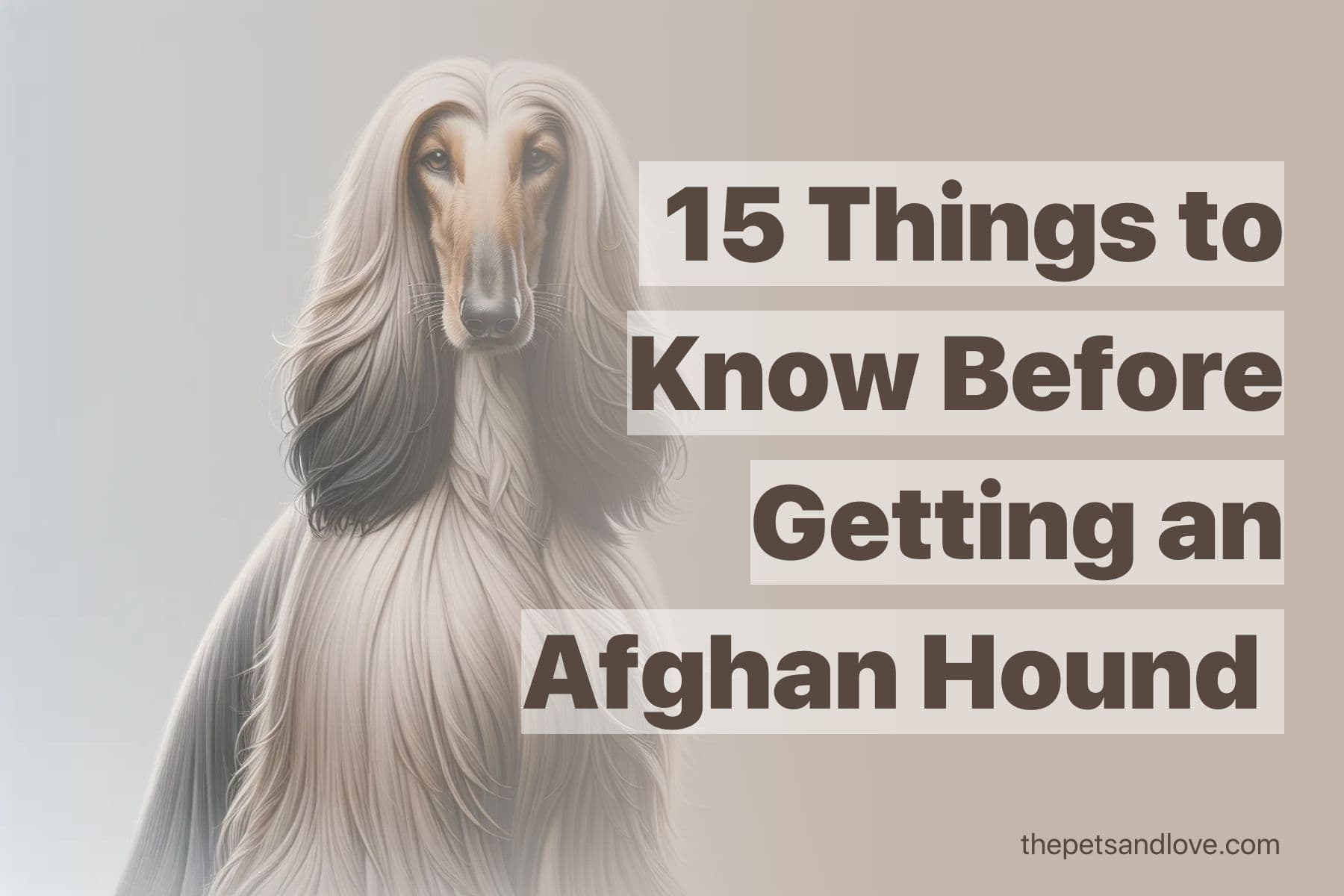What You Should Know Before Adopting an Afghan Hound

Thinking about bringing home an Afghan Hound? These dogs are stunning — with their silky coats and graceful stride, they look like they just stepped off a runway. But owning one isn’t just about having a pretty pup. After spending time helping others care for Afghans (and seeing a few come through rescue and foster programs), I can tell you this breed is not for the faint of heart.
Here’s what you really need to know before adding an Afghan Hound to your life.
1. They’re high-maintenance in the grooming department.
That long, flowing coat? Gorgeous, yes — but it tangles easily. You’ll need to brush several times a week and bathe them weekly. Skipping grooming? Not an option unless you want matting and discomfort. Some owners go for a short “puppy cut” to make life easier, and honestly, it helps a lot if you’re not showing your dog.
2. They’re sensitive, both physically and emotionally.
Afghans have low body fat, which makes them more sensitive to anesthesia. If you get one, find a vet who knows how to work with sighthounds. They’re also prone to issues like hip dysplasia, bloating, skin allergies, and eye problems — so regular health checkups are a must.
On the emotional side, these dogs don’t handle chaos well. Loud homes, sudden changes, or rough handling can really stress them out. They do best in calm, predictable environments.
3. Training them isn’t easy — but it’s worth it.
Afghans are famously independent. They’re smart, but they don’t aim to please like some other breeds (think more “cat energy”). You’ll need patience, a sense of humor, and lots of positive reinforcement. Avoid harsh corrections — it’ll just make them shut down. Consistency and respect go a long way with this breed.
4. They need room to run — and a good fence.
These dogs were bred to chase prey across rugged mountains, and they still have that drive. A quick walk around the block won’t cut it. They need space to sprint safely — ideally a large, fenced area. And when I say “fenced,” I mean securely fenced. Afghan Hounds are athletic jumpers and will be gone in a flash if they see something worth chasing.
5. They’re not the cuddliest dogs.
Don’t expect a velcro dog. Afghans can be aloof, even with their favorite humans. They’re loyal and bond deeply, but they’re not the type to smother you in kisses. With strangers, they’re usually reserved. Socialization from a young age helps, but this is just part of their personality.
6. They don’t bark much — and they’re surprisingly good in apartments.
As long as they get enough physical and mental stimulation, Afghans can adapt to apartment life. They’re generally quiet, clean, and don’t shed much (a huge plus for allergy sufferers). Just remember: daily exercise is non-negotiable.
7. They’re not ideal for households with small kids.
Afghans are sensitive and don’t love rough handling. Their long coats can be tempting for toddlers to tug, and the dogs usually don’t appreciate that. Older kids who understand boundaries do better with this breed.
8. They thrive on quality food.
Lean and athletic, Afghan Hounds need high-quality nutrition. Most do well on 2–2.5 cups of dry food per day, split between two meals. Protein should be a big part of their diet — and if your dog’s super active, they’ll burn through calories fast.
9. They live longer than many large breeds.
Afghans typically live 12–15 years, which is impressive for their size. With proper care and a good diet, they can be your companion for well over a decade.
10. They’re not for first-time dog owners.
Between the grooming, training, and exercise needs, Afghan Hounds require an experienced, patient owner. If you’re looking for a loyal couch potato or eager-to-please pup, this probably isn’t the breed for you.
In a nutshell:
Afghan Hounds are elegant, quirky, and fiercely independent. They’re not everyone’s cup of tea — but for the right person, they’re unforgettable companions. Just know what you’re getting into. If you’re up for the challenge, they’ll surprise you with their clownish side and quiet loyalty.
They’re not the easiest dogs, but they are one of a kind.
Take the Quiz
Is an Afghan Hound Right for You?
The Afghan Hound is known for its elegance and distinctive coat. Discover if this unique and independent breed is your perfect match by taking our quiz! Answer all questions below to discover your compatibility score and get personalized insights.
Question #1: What is the main reason you want a dog?
Question #2: How active is your lifestyle?
Question #3: How much time can you dedicate to your dog daily?
Question #4: What best describes your home environment?
Question #5: What size dog do you prefer?
Question #6: What personality traits do you want in your dog?
Question #7: How much grooming can you handle?
Question #8: Who else lives with the dog?
Question #9: Is this your first dog?
Please answer all 9 questions to see your results
